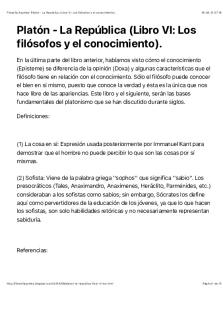MMT Chart - Lecture notes 3, 4, 5, 6 PDF

| Title | MMT Chart - Lecture notes 3, 4, 5, 6 |
|---|---|
| Course | Kinesiology Perspectives in Occupational Therapy |
| Institution | Temple University |
| Pages | 2 |
| File Size | 88 KB |
| File Type | |
| Total Downloads | 70 |
| Total Views | 132 |
Summary
This is a chart containing all of the muscles needed for the first lab practical. It contains origin, insertion, innervation, and how to muscle test for each level....
Description
Muscle & Action
Origin & Insertion
Manual Muscle Testing (MMT) Serratus O: Ribs 1-9 I: Anterior surface Anterior Upward on Medial border Rotation of Scapula
Innervation
Long Thoracic Nerve (C5,6,7)
Protraction
Upper Trapezius Elevation Retraction Upward Rotation
Middle Trapezius Retraction Upward Rotation
Lower Trapezius Depression Retraction
Rhomboids Retraction Downward Rotation
O: External Occipital Protuberance, Superior nuchal line of occiput, Nuchal ligament, Spinous process of C7 I: Lateral 1/3 of clavicle & acromion process of scapula O: Spinous processes of T1-T5 I: Acromion Process & Spine of Scapula
MotorAccessory Nerve
O: Spinous processes of T6T12 I: Tubercle at root of scapula spine medially
MotorAccessory Nerve
O: Spinous processes of C7-T5 I: Medial Border of Scapula from spine to inferior
Dorsal Scapular Nerve (C5)
SensoryC3-C4
MotorAccessory Nerve SensoryC3-C4
SensoryC3-C4
Standard Position (3/fair) Complete motion Arm at side, thumb up, move into 120⁰ of scaption while stabilizing opposing scapula
Rotate & extend head opposite of muscle you are testing. Bring back of head and opposite shoulder together, while stabilizing opposing trapezius.
4/Good 5/Normal Add Add Resistance Resistance With arm in 120⁰ of scaption, place hand on inferior angle of scapula with thumb on lateral border, place other hand on distal forearm. Apply 25% resistance to forearm, and 75% resistance to scapula In extend/rotated/ head to shoulder position, with flat hands apply 25% resistance towards flexion to back of head and 75% resistance towards depression to distal clavicle/acromion process
Prone, abduct arm to 90⁰ with thumb up, extend to bring arm towards ceiling. Stabilize opposing scapula.
In prone, 90⁰ abducted position with thumb towards ceiling and shoulder extended, apply pressure to distal forearm (These muscles are weak, not much pressure is needed)
Prone, abduct arm in scaption plane to 120⁰ with thumb up, extend to bring arm towards ceiling. Stabilize opposing scapula.
In prone, 120⁰ scaption/abducted position with thumb towards ceiling and shoulder extended, apply pressure to distal forearm (These muscles are weak, not much pressure is needed)
Prone, abduct arm to 90⁰ with thumb down, extend to bring arm towards ceiling. Stabilize opposing
In prone, 90⁰ abducted position with thumb down towards floor and shoulder extended, apply increasing pressure to distal forearm (These muscles are
2/Poor Lessen Gravity Take weight of arm and prompt pt to relax. Assist with moving into 120⁰ of scaption and watch inferior angle of scapula for motion. Prone relax arms at side, cup under anterior shoulder for support, support weight of arm distally, ask pt to shrug shoulder & look for elevation
Prone, in 90⁰ abducted position with thumb up, therapist takes weight of arm and asks pt to extend arm towards ceiling, look for retraction motion of scapula Prone, in 120⁰ abducted position with thumb up, therapist takes the weight of the arm and asks pt to extend arm towards ceiling, look for depression motion of scapula Prone, in 90⁰ abducted position with thumb down, therapist takes weight of arm and asks pt to
1/Trace Lessen Gravity and Palpate If no motion when gravity lessened, palpate for muscle contraction at origin/ribs, under armpits If no elevation with gravity lessened, palpate for muscle contraction at cervical spinal level
If no retraction with gravity lessened, palpate for muscle contraction between spine of scapula and spine while pt attempts extension motion. If no depression with gravity lessened, palpate for muscle contraction, start by laying hand at inferior angle and moving medially, while pt attempts extension motion. If no retraction with gravity lessened, palpate for muscle contraction by coming off spine of scapula
Manual Muscle Testing (MMT)...
Similar Free PDFs

Lecture 5 + 6 notes
- 12 Pages

Chapters 3, 5, 6, 7 Lecture Notes
- 40 Pages

Ch4 - Lecture notes 3, 4, 5
- 33 Pages

4 - Lecture notes 3
- 1 Pages

Lecture 3 + 4 notes
- 16 Pages

Prescription - Lecture notes 5-6
- 2 Pages

Chapter 6 - Lecture notes 5
- 3 Pages
Popular Institutions
- Tinajero National High School - Annex
- Politeknik Caltex Riau
- Yokohama City University
- SGT University
- University of Al-Qadisiyah
- Divine Word College of Vigan
- Techniek College Rotterdam
- Universidade de Santiago
- Universiti Teknologi MARA Cawangan Johor Kampus Pasir Gudang
- Poltekkes Kemenkes Yogyakarta
- Baguio City National High School
- Colegio san marcos
- preparatoria uno
- Centro de Bachillerato Tecnológico Industrial y de Servicios No. 107
- Dalian Maritime University
- Quang Trung Secondary School
- Colegio Tecnológico en Informática
- Corporación Regional de Educación Superior
- Grupo CEDVA
- Dar Al Uloom University
- Centro de Estudios Preuniversitarios de la Universidad Nacional de Ingeniería
- 上智大学
- Aakash International School, Nuna Majara
- San Felipe Neri Catholic School
- Kang Chiao International School - New Taipei City
- Misamis Occidental National High School
- Institución Educativa Escuela Normal Juan Ladrilleros
- Kolehiyo ng Pantukan
- Batanes State College
- Instituto Continental
- Sekolah Menengah Kejuruan Kesehatan Kaltara (Tarakan)
- Colegio de La Inmaculada Concepcion - Cebu








